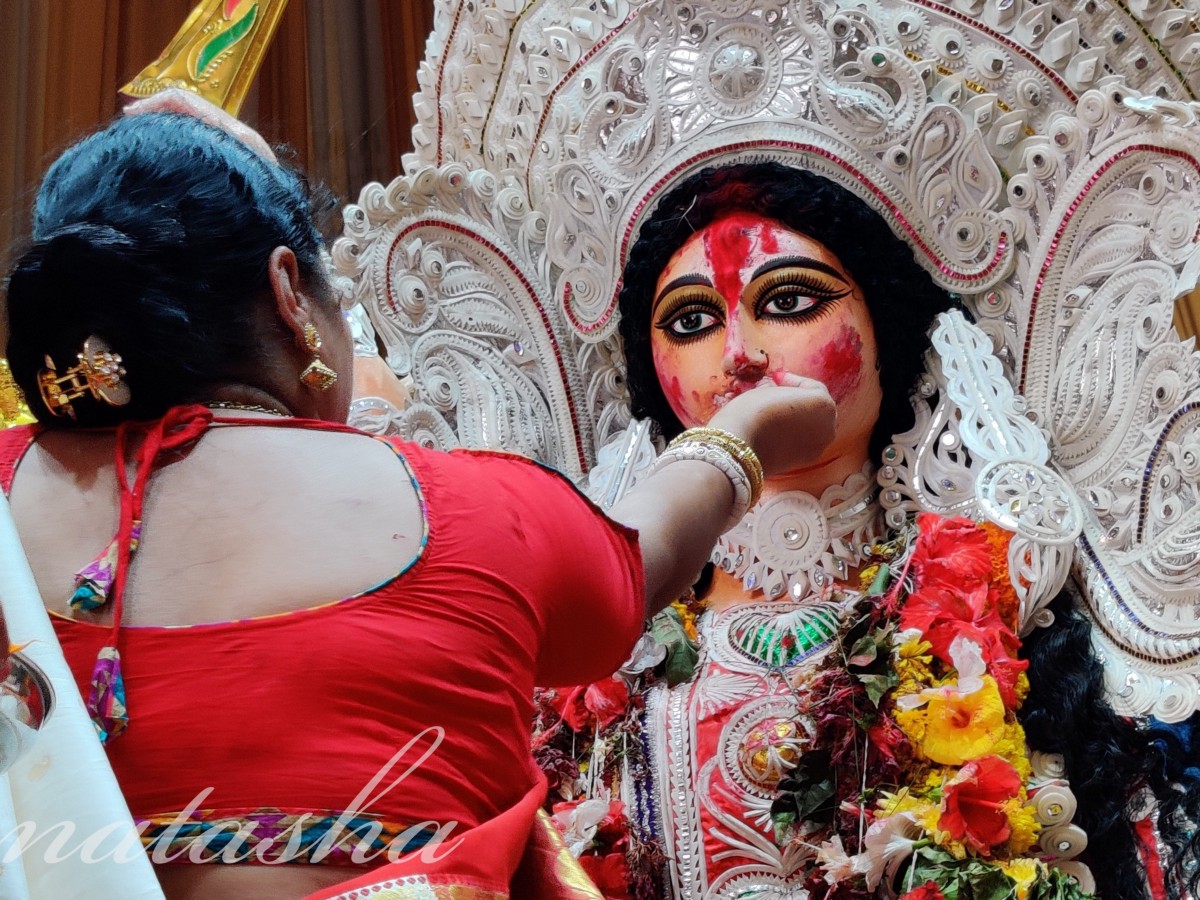
To me, Navratri has always been associated with Maa Durga. Though born in a Tamilian household, my childhood and youth was spent in communities with a predominantly Bengali population, so Durga Puja is a part of my cultural heritage, not Navratri golu.
++
++
https://twitter.com/nuts2406/status/1320452100040527872
The frenzied beat of the dakis. The sound of conch shells. The smell of camphor and flowers, mingling with the tantalizing aroma of street food. New clothes and conversations. And reigning above it all the benign face of Maa Durga, home on a visit.
++
++
Dashami was the day when all the excitement came to an end. Maa Durga would leave her earthly home, and return to her heavenly abode. For us, the excitement would come to an end, and we would be left with three words on our lips, আবার এসো মা/ come back soon, Maa.
++
++

If you asked me my family’s traditions for Vijaya Dashami, I wouldn’t be able to answer. Perhaps even my parents didn’t know; they had both grown up in other states and had most certainly picked up traditions from the places where they lived.
++
++
Dussehra assumed significance after I married into a North Indian family. But I was never comfortable with interpreting the epic battle between Rama and Ravana as one where Good triumphs over Evil.
++
++
Rama was supposed to uphond the moral code, but he was not above breaking it himself and Ravana often conducted himself with more honour than did his antagonist.
As I saw it, in that particular battle, Good and Evil were labels reserved for the victor and the vanquished.
++
As I saw it, in that particular battle, Good and Evil were labels reserved for the victor and the vanquished.
++
I am not the only one who thinks that way. There are communities which mourn the death of Ravana, just as there are communities that celebrate the victory of Rama. To them, Ravana is the hero. And it's a valid interpretation too.
++
++
That is what makes Hinduism unique. There is no common ‘Hindu’ culture or tradition. There is no single version of Hinduism. There is no one God all Hindus worship. There is no one way in which all Hindus worship a particular God.
++
++
In the last few years, there has been a strong attempt to homogenize Hinduism. One deity has been given prominence over the others, and even his benign form metamorphosed into one who is ready for battle. A singular narrative is being thrust on the country.
++
++
The essence of Hinduism has always been its plurality. It has been the ability to assimilate and cherish different cultures and traditions. To cherish our differences, and to take pride in our collective tradition. It would be a shame if that is lost.
++
++
In my tiny home, we cling to the plurality. Though none of us is a practicing Hindu, we carry forward parts of the culinary traditions of our families.
Kala chana, sooji halwa and poori on Ashtami, because my mother in law requested me to carry the tradition forward.
++
Kala chana, sooji halwa and poori on Ashtami, because my mother in law requested me to carry the tradition forward.
++
Shundal and payasam the next day because my mother wants that I celebrate Saraswati Puja on Navami.
And I hope the kids don't learn about smashing a pumpkin on Dashami day- I don't particularly want to clean up after them!
medium.com/@nuts2406/our-…
And I hope the kids don't learn about smashing a pumpkin on Dashami day- I don't particularly want to clean up after them!
medium.com/@nuts2406/our-…
• • •
Missing some Tweet in this thread? You can try to
force a refresh


